Mashrabiya Parametric Facade, Al Bahar Towers
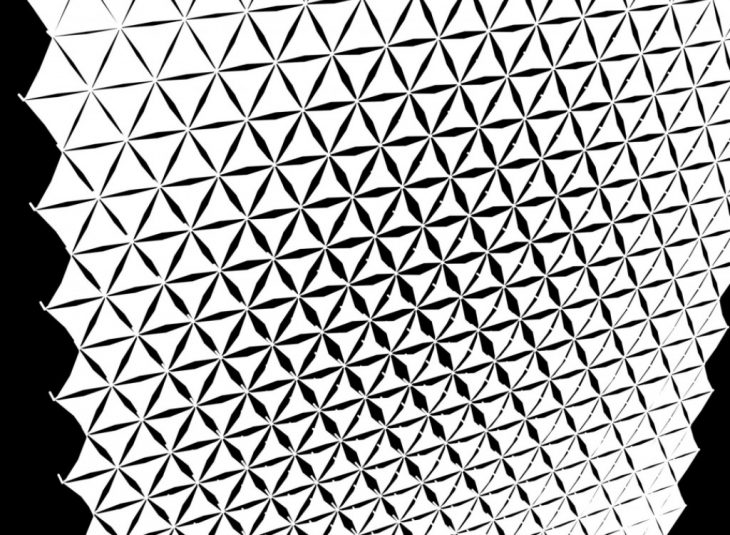
Mashrabiya Facade Pattern
Al Bahar Mashrabiya FacadeThe objective of the project was to decode the logic, analyze and define the computational process behind the complex facade system; through the means of simple steps.
Al Bahar Towers, located in Abu Dhabi, was constructed in 2012 and designed by Aedas Architects. the purpose of the mashrabiya shading system was to keep the building cool without the need for a large amount o fair conditioning in an area that can reach temperatures of over 120 degrees Fahrenheit.
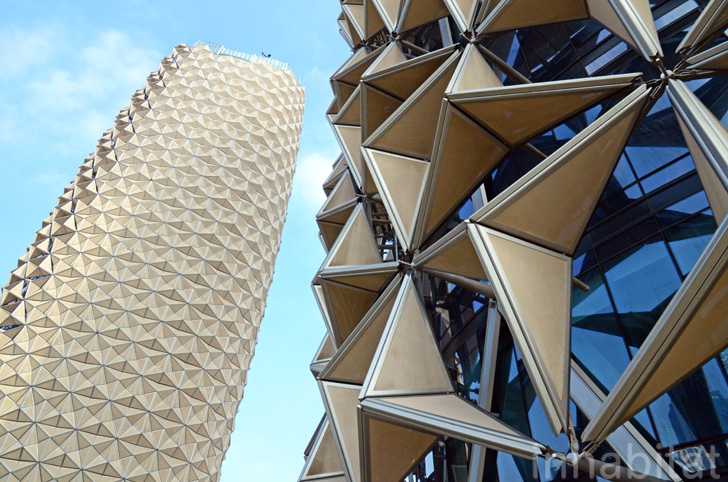
https://inhabitat.com/wp-content/blogs.dir/1/files/2014/01/Al-Bahar-Towers-28.jpg
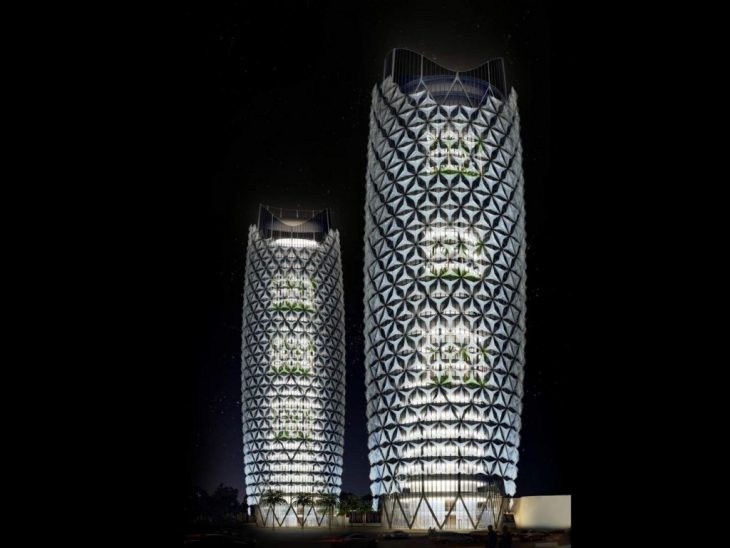
https://www.archdaily.com/270592/al-bahar-towers-responsive-facade-aedas
Analysis:
The computational process adopted for this parametric facade comprises of a transformation of the hexagonal facade to a triangular facade. The transformation is a reaction of the suns position in order to cool the building.

Decode Geometry
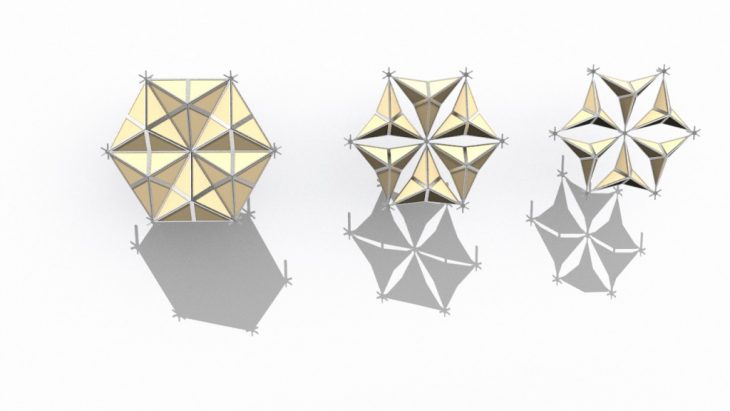
Facade Process
Step 0: As in all code we start with 0
- Keep in mind that this grasshopper definition does not have to scare you. It is possible for users of various skill levels to be able to create this parametric facade by following this simplified pseudo code.
Step 1: Create triangle grid within overall hexagon grid that reacts to an attractor point
- Create hexagon grid
- Find center of each hexagon in grid
- Extract vertex’s from hexagons
- Draw curves from hexagon vertex to center of hexagon
- Join curves from hexagon to center of hexagon
- Find center of triangle
- Find mid-point of each side of triangle
- Draw curve from mid-point of triangle edges to center of triangle (x3)
- Create vector direction between end points of previous curve
- Create point attractor
- Measure distance from attractor point to mid-point of triangle
- Remap point placement with distance and domain
- Move point according to remap
- Create surface from set of points
- Array surface around mid-point (x3) to create triangle
- Array three surfaces around mid-point of hexagon (x6)
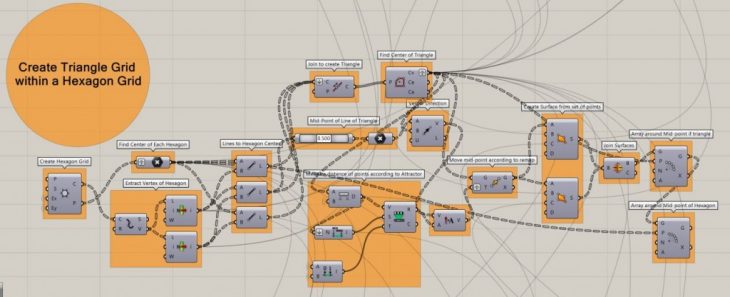
Triangle Grid Responding to Attractor Point
Step 2: Create a structural frame around each triangle
- Extract edges from triangle surface
- Scale edges from center of each triangle
- Extrude frame with a thickness
- Array frame around mid-point (x3)
- Array three frames around mid-point of hexagon (x6)
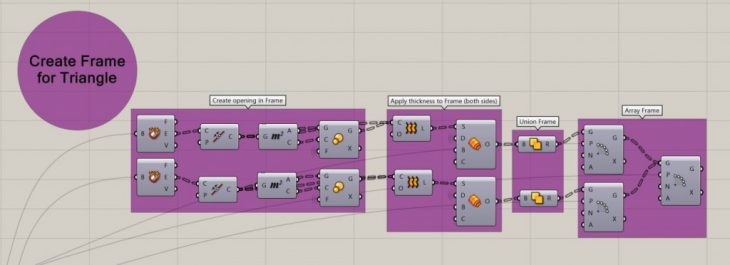
Create Frame for Triangle
Step 3: Create height of each triangle that reacts to attractor point
- Move mid-point of triangle perpendicular to facade
- Remap point according to attractor manipulation
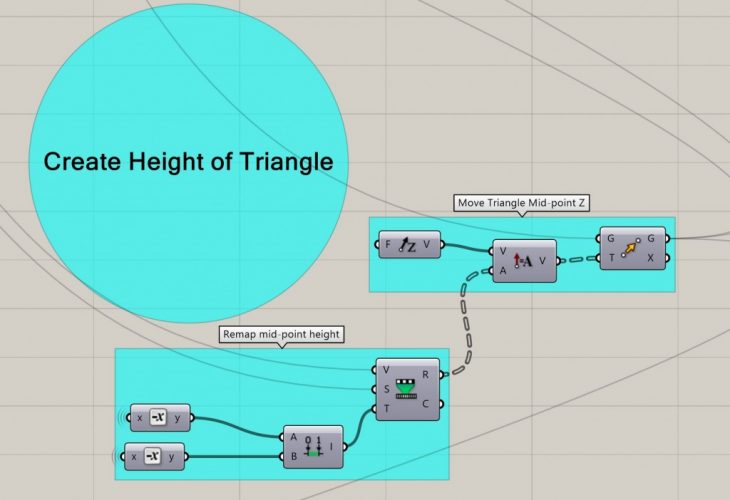
Create Height of Triangle
Step 4: Making the triangles edges retract and expand
- Remap point triangle edge point according to attractor
- Use smaller domain and separate vectors to move edges in as triangle moves up
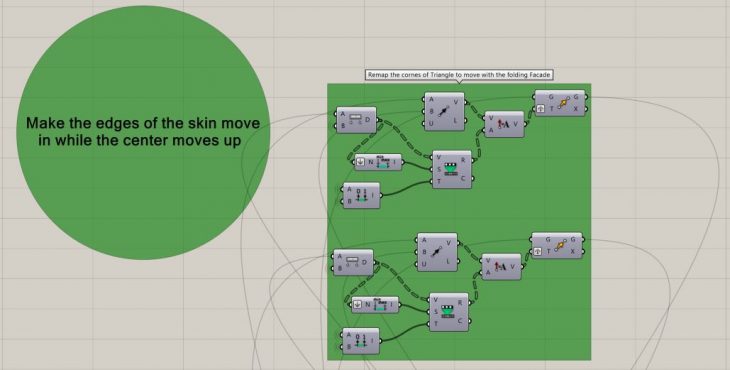
Move edges of triangle in as the center moves out
Step 5: Create structure connecting back to building facade
- Create curve from center point of hexagon grid in the negative perpendicular direction
- Create curve from one corner point of hexagon grid in the negative perpendicular direction
- Pipe curves and cap
- Array pipes, from corner, around center point of hexagon (x6)
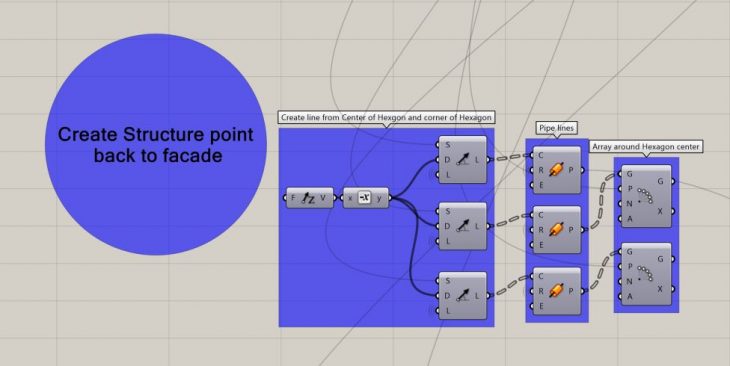
Create structure point back to building
Step 6: Create Actuator system that moves with triangle expansion and retraction
- Create curve from center of triangle and center point of triangle that is manipulated by the attractor point
- Pipe curve
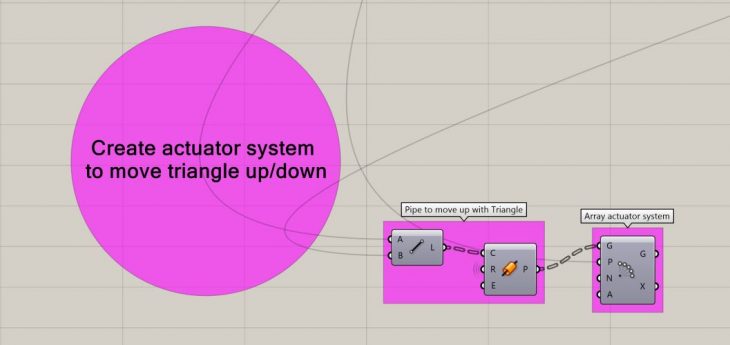
Create Actuator System
Step 7: Create structure for actuator system
- Use end point of triangle and center of triangle to create a curve
- Pipe curve and array around center of triangle (x3)
- Array pipes around center of hexagon (x6)
- Extract edge from “facade structure pipe” and extrude in the negative perpendicular direction
- Offset surface with thickness
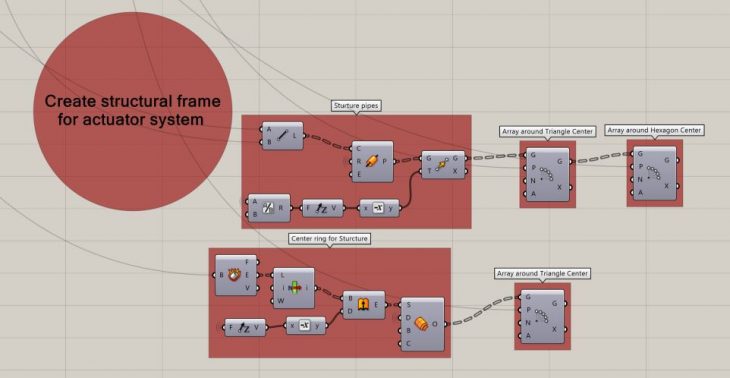
Create structural frame for actuator system
The Results: Renderings
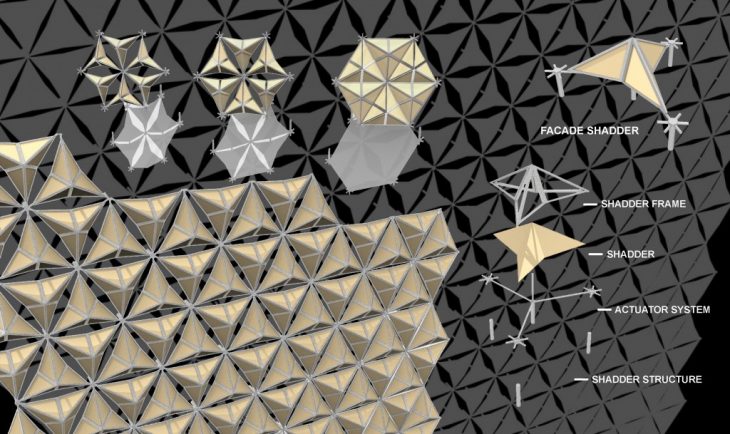
Rendered Results
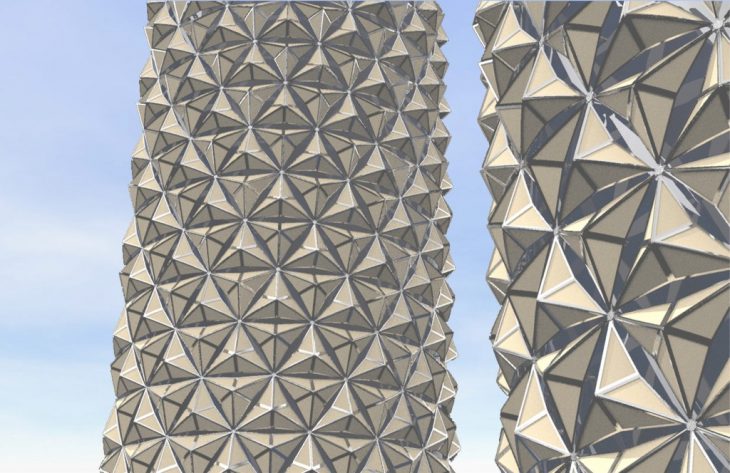
Al Bahar Render
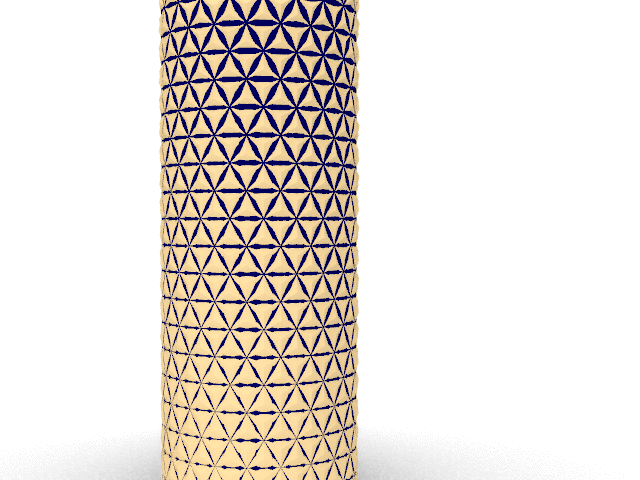
https://vimeo.com/user91232963/review/298252568/c64527d138
Click Mashrabiya Parametric Facade to watch Video
Mashrabiya Facade is a project of IAAC, Institute of Advanced Architecture of Catalonia developed at MAA01 in 2018/19 by:
Student: Justin Sheinberg
Course: So. 3 Computational Design 2018/19
Faculty: Rodrigo Aguirre, David Andres Leon, Daniil Koshelyuk
